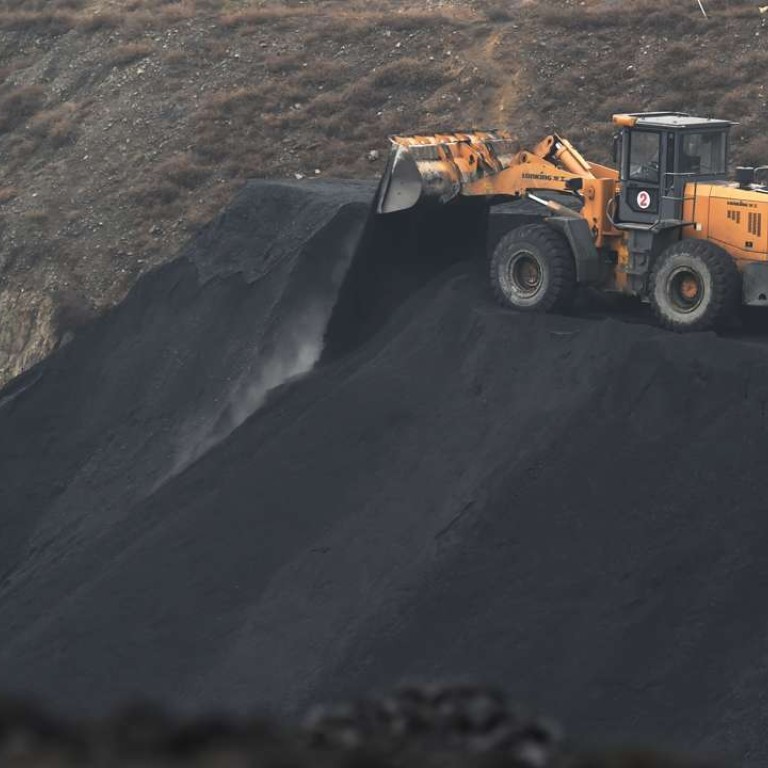
Exclusive | Winter is Coming: China wants big coal mines to produce more, while small mines should shutter
Large companies should exploit their most efficient mines at full capacity, while smaller mines must shutter, the NDRC told a meeting of two dozen miners on Tuesday
China’s government is adopting a two-tracked approach to ensure ample coal supply for the northern hemisphere’s impending winter, while pushing ahead with a forced consolidation among the country’s mines.
The largest producers are urged to exploit their most efficient mines at full capacity to ensure sufficient supply, while the smallest and the less efficient mines with outdated facilities must be shuttered, according to a meeting at the National Development & Reform Commission, which oversees industrial planning.
“The main message is that the advanced mines must get back to full production as soon as possible to ensure sufficient supply during the winter months ahead,” a miner told the South China Morning Post in an interview, on condition he not be named for speaking about the NDRC’s closed-door meeting with two dozen coal producers in Beijing. “At the same time, the elimination of inefficient and loss-making mines must keep going.”
The meeting was held after at least two rounds of similar meetings last month, where selected so-called “advanced mines” were told to resume operating at the maximum pace of 330 days a year until at least year-end to relieve tight supply.
China’s coal prices have more than halved since 2011, as an energy boom fed by a breakneck economic growth led to a mining binge and oversupply of the fuel. As China’s economy grew at the slowest pace in decades, the benchmark price of power-station coal with 5,500 kilo-calorific value fell to 380 yuan a tonner in Qinhuangdao late last year, from a high of 850 yuan per tonne ion 2011.
As losses among the least efficient mines mounted during the industry slump, concerns about rising non-performing loans and unemployment prompted the NDRC to intervene.
The commission, a holdover from China’s history as a centrally planned economy, engineered a supply squeeze to force coal prices to rise, capping the entire industry’s annual production at 276 days in May, 16 per cent fewer days than the original 330-day production.
The production cut coincided with an unusually hot summer and a surge in demand for air conditioning and industrial power, causing prices to soar to 577 yuan this week, more than 50 per cent higher than last year.
Alarmed by the rise, Beijing ordered a roll-back of the output ceiling among the most efficient mines.
Yanzhou Coal Mining, the listed unit of the nation’s fourth-largest coal miner Yankuang Group, has been ordered to resume a 330-day production rate in its largest mines - together accounting for around 75 per cent of its total capacity - until year-end. Its smaller mines also did so since the start of this month, a company official said.
China had 3.58 billion tonnes in approved coal mining capacity as at the of 2015, of which 12.5 per cent were small mines with less than 300,000 tonnes of annual capacity, according to the National Energy Administration.
About 63 million tonnes of net annual capacity were added in this year’s first half, after closures and reductions were netted off against newly commissioned capacities, according to a GF Securities research report.
“In the fourth quarter, the maximum production increase from the fine tuning policy could amount to 150 million tonnes, which should be sufficient to relieve the supply tightness,” GF said.
In three to five years, the brokerage forecast supply to be “slightly tight,” given 800 million tonnes of outdated capacity and 500 million tonnes of illegal and above-capacity production are supposed to be eliminated.
They will be mostly offset by the coming of stream of 1 billion tonnes of approved new-build or mine expansion capacity, the brokerage said.

